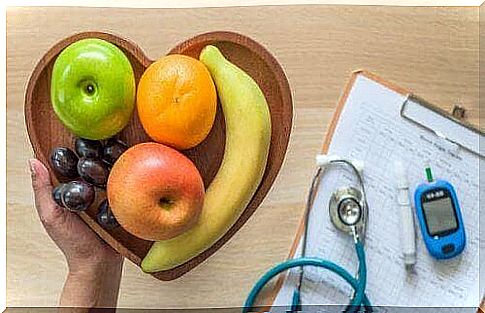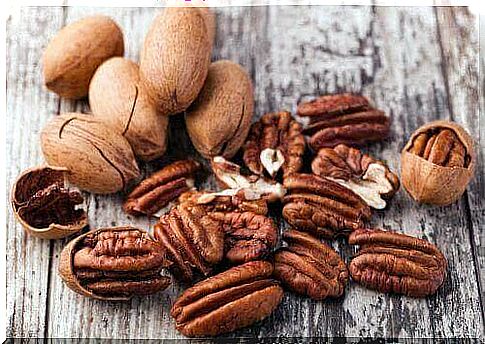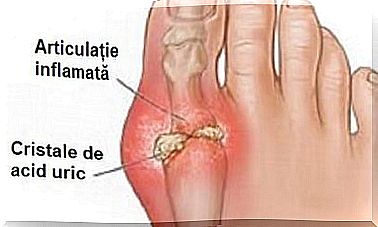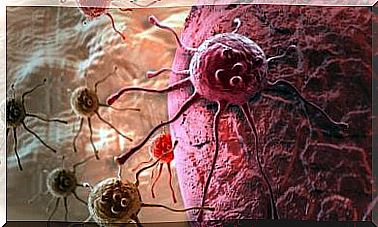Discover 7 Dietary Changes For Diabetics

In order to keep your blood sugar under control when you suffer from diabetes, it is essential to be aware of your eating habits and, if necessary, to change them. Today we propose some dietary changes for diabetics. Don’t hesitate to try them!
How to improve your diet when you suffer from diabetes
Changing your diet is one of the best ways to avoid the complications of diabetes. For this reason, we advise you to pay attention to what you eat.

Always opt for quality food with a higher nutritional value. Don’t overeat. It is best to serve small portions to keep your blood sugar under control. Another useful measure is to try to organize your meals. For example, follow a food intake program to avoid hyperglycemia.
In general, dietary changes for diabetics are based on the need to eat healthy foods to meet nutritional requirements. At the same time, these changes should help you maintain a healthy weight and keep your triglycerides and cholesterol levels under control.
Below, we offer you some useful ideas.
7 dietary changes for diabetics
Changing eating habits is an essential measure to have a high quality of life. By eating well, without abusing calories or serving too many servings, you will optimize your insulin production and how this hormone is used – that is, you will avoid the main problems caused by diabetes.
Of course, before changing your diet, consult a doctor and ask him what you can eat and what not. There is no other person more qualified to advise you!
1. Moderate your intake of foods that turn into sugars

Did you know that sweets are not the only foods that cause hyperglycemia? Any source of simple carbohydrates leads to an excessive increase in blood glucose levels.
That doesn’t mean you have to avoid carbs. But it is advisable to opt for complex carbohydrate sources, a nutrient that is gradually released into the bloodstream, allowing better control of blood sugar.
2. Eat enough protein
Protein-rich foods do not raise blood sugar levels. Therefore, doctors recommend that we consume them daily, respecting the recommended portions for our age, height and body weight.
According to a study published in 2014, a high-protein breakfast offers metabolic benefits to patients with type 2 diabetes. Ask your doctor if such a meal is right for you.
3. Say yes to slow release carbohydrates
Complex carbohydrates have a slow release. This means that you gradually increase your blood glucose levels, helping you to avoid hyperglycemia. Consume potatoes, brown rice, wholemeal pasta, wholemeal bread and legumes.
4. Monitor your fat intake

Currently, there is no consensus on adequate fat intake for patients with diabetes. The studies carried out so far have reached different conclusions.
Although there is no single criterion, we advise you to opt for “beneficial” fats instead of saturated ones. For example, replace the sausages with avocado and cook with olive oil instead of butter.
5. Avoid juices
Every time you feel like a glass of juice, eat a fruit. For example, although a glass of orange juice has as much sugar as the fruit itself, the sugar of the former is absorbed faster and can cause hyperglycemia.
6. Eat oily fruits

A study published in February 2019 in the journal Circulation Research looked at the eating habits of more than 16,000 people with type 2 diabetes. It concluded that almonds, pistachios and nuts can reduce the risk of heart disease in adults with type 2 diabetes 2.
It is estimated that people who serve at least 5 servings of oily fruit per week have a 17% lower risk of developing heart disease than those who consume this type of food in smaller quantities.
7. Consider increasing the intake of cinnamon
The data on this subject are contradictory. Some studies suggest that regular consumption of cinnamon may lower blood sugar in patients with type 2 diabetes, while others have found no such correlation. Before increasing your cinnamon intake, ask your doctor’s opinion.
Improving your diet is the first step in controlling your diabetes. Of course, you should not make any radical changes without first consulting a specialist. Your doctor is a qualified person to analyze your nutritional needs and physical condition and to propose appropriate dietary changes for diabetics.









